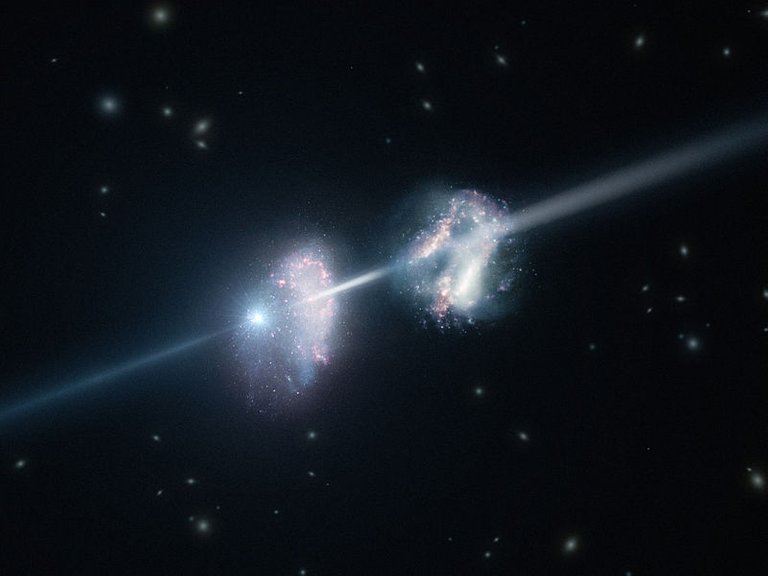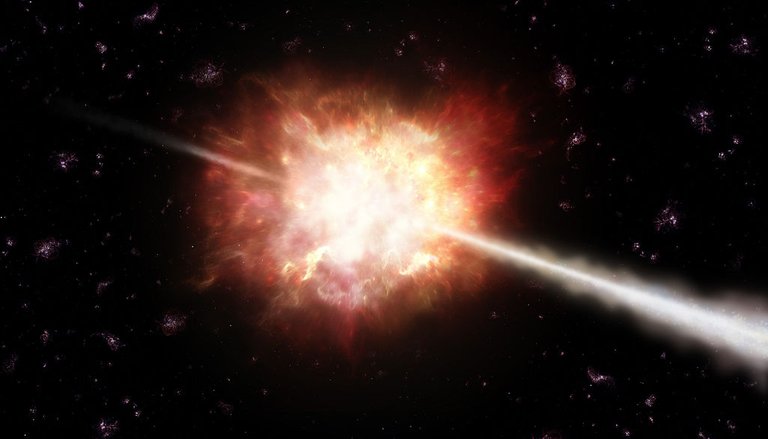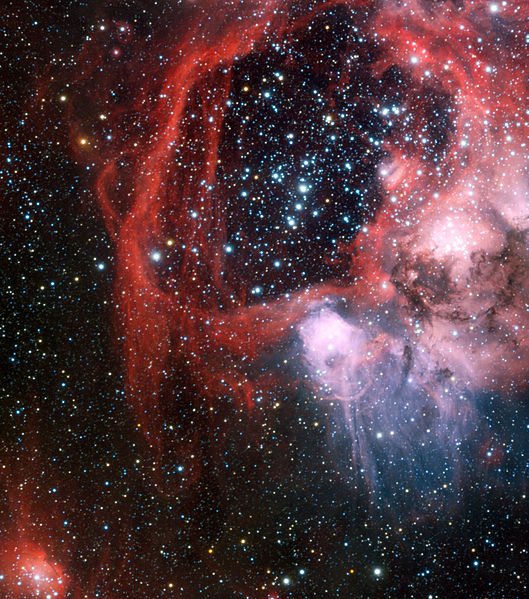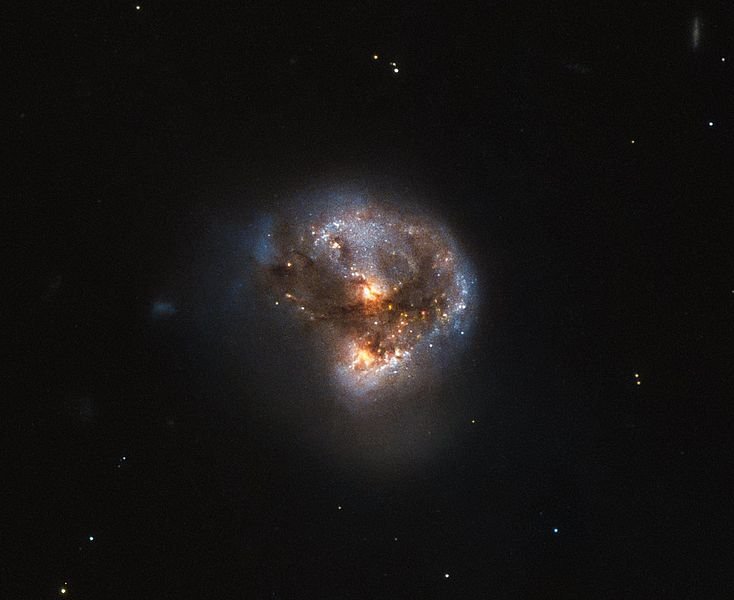The story begins with the story of the Cold War between the United States and the Soviet Union. In 1963, a year after the Cuban Missile Crisis that almost brought the world to nuclear war, the United States launched satellites into space to keep an eye on the movements of the Soviet Union. That year, the two superpowers signed an agreement on banning nuclear weapons testing in the atmosphere and in outer space. Satellites launched by the United States are hauling at an altitude of 100,000 kilometers to ensure that the Soviet Union abides by the agreement. The satellite is designed to detect high-energy radiation called gamma rays generated by nuclear explosions. In 1967, the satellite began to detect some of the mysterious radiations. The strange thing is that the radiation does not come from a nuclear bomb, but from outer space. The discovery was kept secret until 1973. For almost a decade, gamma radiation has left scientists confused.

Along with the end of the Cold War, scientists began launching satellites and space telescopes to study where the radiation came from. Up to now, more than a thousand explosions that produce gamma radiation can be detected in the sky every day. The explosions come from exotic objects in the universe such as black holes and neutron stars. The resulting explosion is very bright and stretches in a wide spacetime so that its traces can be used to reveal the origin of such objects. Gamma-ray bursts or gamma-ray burst (hereinafter abbreviated as GRB) are brief events because they last only a few seconds, even milliseconds. This shows that the universe is more dynamic than previously thought.
Detecting a Gamma-ray Explosion
An astrophysicist from New York University named Andrew MacFadyen revealed that GRB is a very extreme phenomenon because it is the most powerful explosion in the Universe. The explosion is millions of times brighter than the light generated by galaxies. Every second of it, the energy produced can be equivalent to the energy that all stars in the universe produce. The explosion is also the most energetic form of electromagnetic radiation. However, because Earth's atmosphere is impermeable (impenetrable) against gamma rays coming, such explosions can only be detected in outer space. Therefore, new GRB can be detected after humans enter the era of space exploration. "Most of the objects studied in astronomy are objects that have long been known to humans such as stars, galaxies, and planets. This is different from GRB. The discovery of GRB is a coincidence never imagined by anyone before, "said Edo Berger, an astronomer at Harvard University.
In 1991, NASA launched the Compton Gamma Ray Observatory with an instrument called Burst and Transient Source Experiment (BATSE) to learn GRB in more detail. The instrument has now detected hundreds of GRB and found that GRB is basically divided into two types. Some explosions only occur in a short time and are visible only a few milliseconds (short-duration GRB). Another explosion lasts longer and looks bright for up to 30 seconds or more (long-grained GRB). This seems to indicate that two types of GRB come from two different phenomena. However, to identify the phenomenon, astronomers must know from where the explosion originated. If the explosion is localized, it explodes in the Milky Way galaxy, then most GRBs should be seen coming from the galactic plane. However, BATSE found that the explosions were spread evenly across the sky, indicating that many GRBs are from outside our Galaxy.
The next step to do is to determine how far the GRB is from us. Therefore, astronomers need to seek afterglow (remaining radiation that remains after gamma rays dim). The afterglow will still look bright in other wavelengths such as X-rays and visuals as well as providing important information on where the explosion occurred. Over time, finally in 1996, Italy and the Netherlands launched BeppoSAX, a gamma-ray telescope that can measure GRB spacing with high accuracy. One of BeppoSAX's achievements was when the telescope managed to locate a GRB located outside our Galaxy in 1997. The GRB comes from somewhere about six billion light-years from Earth.
Exploding Stars
Astronomers have long suspected that GRB comes from extreme objects such as black holes or neutron stars. Only such objects possess gravity and a very strong magnetic field so that the resulting gamma-ray burst is enormous even when the time is short. We know that the two objects are both formed from the rest of dead massive stars. When a massive star runs out of fuel for a fusion reaction, the star's core may collapse into a neutron star or black hole, depending on its mass. Meanwhile, a more outer star layer will be thrown in a large, very bright explosion called a supernova. The interesting thing is that astronomers found GRB several times when a supernova occurred. This seems to indicate that GRB comes from the process of star death through supernovae. However, only about one percent of all supernovae are found to be associated with GRB. This means the scenario is still scarce.
After massive stars collapse and form a black hole, the remnants of the surrounding gas begin to orbit around the black hole. As the gas drops into the black hole, enormous energy is released and some of it in the form of jets that radiate at very high speed (even near the speed of light). The jet produces gamma rays that if directed to Earth will be seen as GRB.
Cosmic Collision
The exploding star scenario is able to explain the long-duration GRB well. However, astronomers still have not agreed on what phenomena are causing short-lived GRBs. NASA then launched the Swift telescope to study the short-duration GRB. Neil Gehrels, who was the head of Swift's current mission, stated that short-duration GRB does not come from exploding stars or supernovae. GRB is found in galaxies that are different from the general (peculiar).
All the evidence found leads to one hypothesis: The short-duration GRB comes from the collision of two neutron stars. Astronomers estimate that the universe contains many neutron stars in pairs and orbit each other. As time passes, the two paired neutrons get closer together, collide, unite, and release enormous energies like gamma rays. This hypothesis is also supported by observations from Swift. Nevertheless, there is still a notion that short-duration GRB can also be generated from collisions between neutron stars and black holes. Therefore, further research is needed to ensure which scenarios are dominant. One way is to detect gravitational waves. When two neutron stars orbit each other and move closer to each other, they lose energy and release it in the form of ripples in the space-time structure called the gravitational wave. The gravitational waves generated by two neutron stars are certainly different from those produced by neutron star pairs - black holes. Instruments such as the Gravitational-wave Observatory (LIGO) Gravitational-wave Observatory (LIGO) Laser Interferometer are expected to study the gravitational waves to prove whether the neutron star-neutron star collision scenario is more dominant than the neutron-black hole collision in yielding GRB or vice versa.
New Insights
Studying GRB is very interesting. Because GRB is very bright, we can detect GRB which is very far away. The most distant GRB known today comes from a place where the universe was still 400 million years old. That is, the explosion is a signal of the death of an early generation when the Universe was young.
Studying the stars of the early generations will open up new insights about how our universe came into being and what it's like a few million years after birth. In addition, we can study the evolution of the universe from time to time by analyzing the spectrum of light GRB containing chemical fingerprints from different places and times. GRB teaches us that the universe is very dynamic and to explore it we have to be alert at all times.
Reference :
- http://www.bbc.com/earth/story/20160714-the-biggest-explosions-in-the-universe
- http://articles.adsabs.harvard.edu/full/1973ApJ…182L..85K/L000085.000.html
- http://w.astro.berkeley.edu/~ishivvers/grbs.html
- http://www.nature.com/nature/journal/v387/n6636/full/387878a0.html
- https://www.space.com/23684-brightest-gamma-ray-burst-mysteries.html




https://xploreastro.com/2017/04/15/gamma-ray-burst-ledakan-terbesar-di-alam-semesta/
Thanks for pointing it out!
My pleasure @lemouth
Outstanding article. Question ☝️: in medical science, sometimes we use gamma for radiotherapy such as for killing cancer cells. And as I know apart from killing cancer cells, the gamma also kill healthy cells. As far as your concern... how much effect will gamma cause to our body? I am curious to know the truth side-effect of the gamma because sometimes as a health provider we do not the exact caution of the gamma. Looking for your answer bro @whalhesa. Thanks in advance
Gamma rays can be used in various activities, such as; treatment of cancer through radiation, fluid flow tracking, searching for natural resources, sterilization of medical equipment, and geodetic mapping. All of these activities take advantage of the properties of gamma rays that have very high energy and further range power.
Just like X-rays, gamma rays can also pass through almost any material. Gamma ray radiation is measured in millirem (mrem). Based on observations, every normal environment at least exposed to radiation exposure of 25 mrem.
Radiation exposure increased to 5 thousand mrem which is felt by many people working in a radioactive environment with a maximum level of protection. The normal threshold of the radiation exposure level is set at 10 thousand mrem. If it exceeds this limit, it will have a tremendous health impact as happened to radiation sufferers due to nuclear bombs dropped on Japan during World War II. Gamma rays can have tremendous health effects, such as: Can cause cancer, such as skin and bone cancers, damage to body cell tissue, and genetic mutations affecting the generation to be born
Thanks for the answer.
I am slightly surprised by this statement. LIGO and VIRGO are not expected to do so... They did it already! :)
Both the gravitational waves generated by the collision of two neutron stars and the production of gamma rays were simultaneously observed. This was one of the major scientific event of 2017. You can check the official websites of these collaborations for more information. Maybe could you consider adding this to your post (that is great by the way)?
Yes .... I will learn more.
:) Thanks @lemouth for your feedback.
My pleasure :)